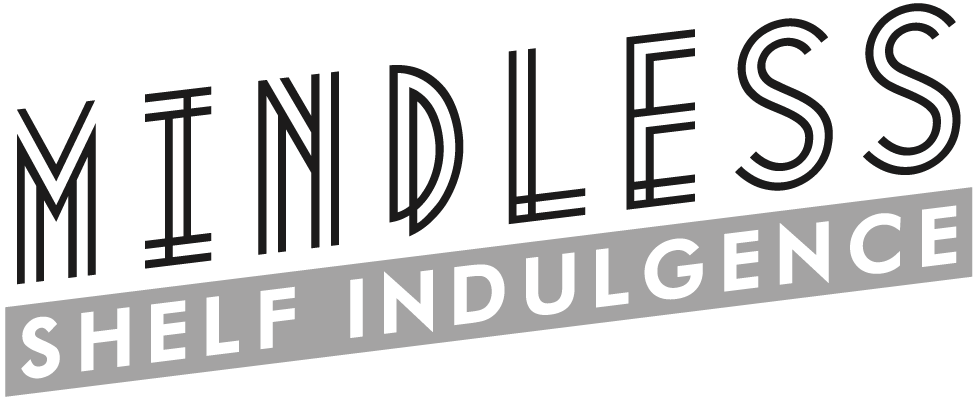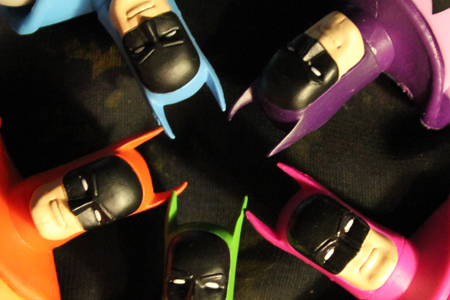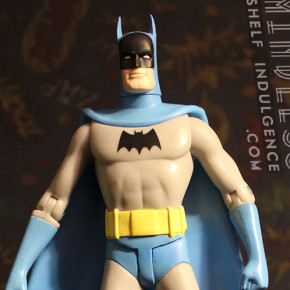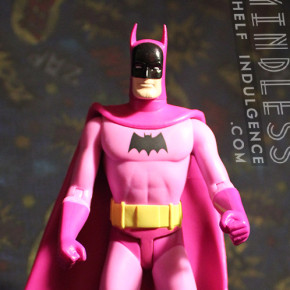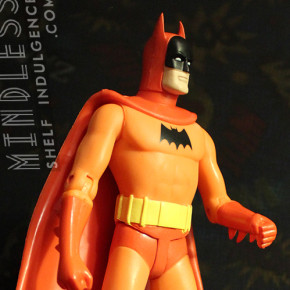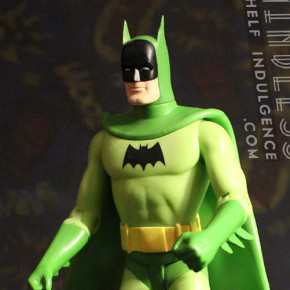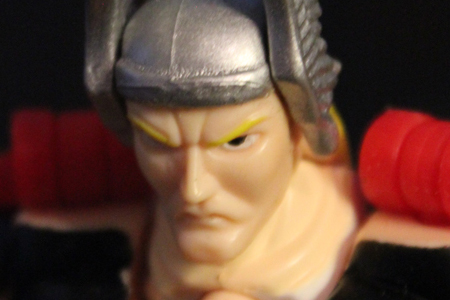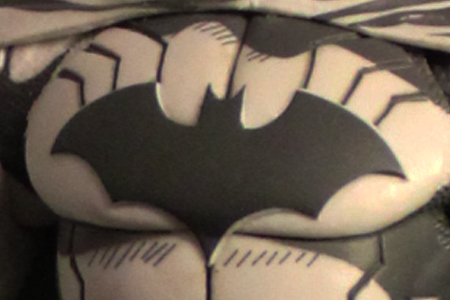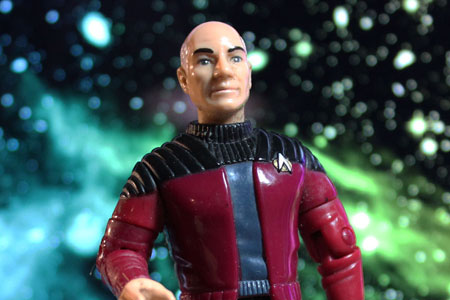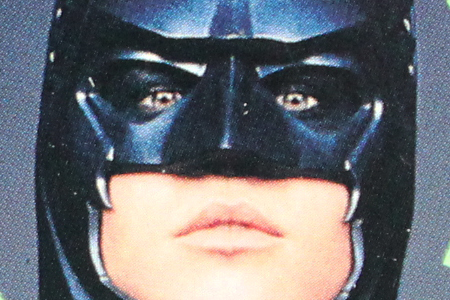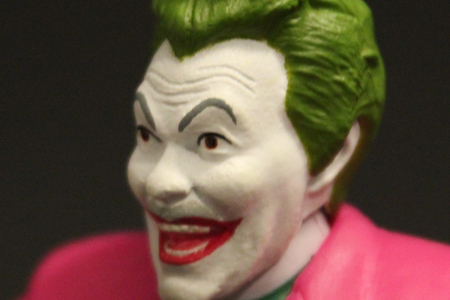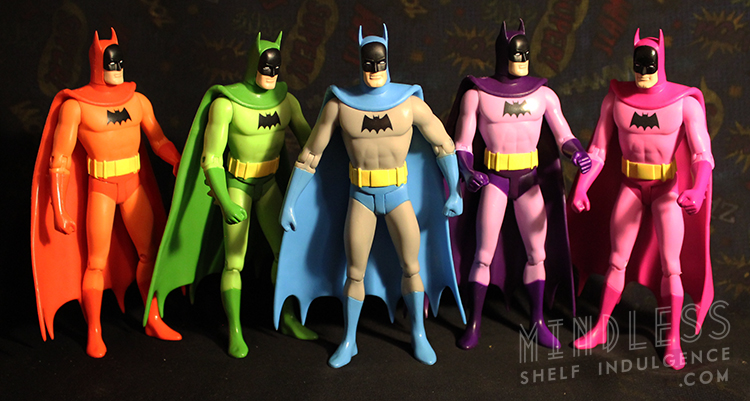
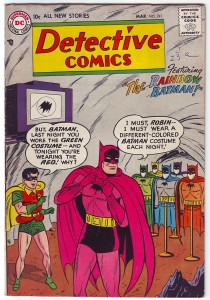 In 1957, Batman underwent one of his many, many costume changes.
In 1957, Batman underwent one of his many, many costume changes.
Detective Comics #241 featured a Batman who changed the colors of his blue and grey costume every day of the week, hoping to distract criminals and observers from Robin’s wounded arm, and subsequently figure out his identity. You know, instead of just giving Robin the week off, and because it’s impossible for two people to have a broken arm at the same time. The whole event comes together when Batman bewilders the world by wearing a costume that’s made up of straight-up rainbow stripes. Batman’s plan works, and all is right in the Silver Age world.
Rainbow Batman is one of countless weird stories in which iconic heroes temporarily wear unusual costumes, most of which are quickly forgotten. While Rainbow Batman had a brief renaissance in the form of an episode of Brave and the Bold, and later a series of Funko Pop!s, he’s mostly a footnote in comic history. When Batman’s 75th anniversary came around, DC Collectibles announced that they were going to make a boxed action figure set of all six Rainbow Batmen featured on the cover of Detective #241.
The anniversary came and went, and DC seemed to focus on muddling through their convoluted New 52 stuff instead of realizing the legacy of the company and its characters, and the set never appeared. Meanwhile, on the other side of the globe, the factories that produce toys for nerds were becoming more and more astute about filling the gaps that comic collectibles leave, as evidenced by the recent explosion of unofficial DC and Marvel LEGOs. So, when Rainbow Batman started showing up on eBay, with no signs of them ever being officially released, I had to get some. [NOTE : A boxed set of these guys was finally released in 2018.]
Superficially, they use the same “Silver Age Batman” mold that DC has been using for years, and all are exactly the same, except for the color scheme, making them exceptionally easy to produce. Ultimately, the bootleggers only produced five variations, and not the sixth yellow figure, which seems unusual given the demand for the set, but it’s still better than nerd-needs going completely unfulfilled. And as action figures of weird things go, they serve their purpose by existing. Their poseability is limited as they don’t have ankle joints, but they are blessed with some stiff, limited ball joints for shoulders. No one’s going anywhere with those huge capes, anyhow.
It’s enough that these just exist, because they show that comics can get weird. It’s easy to forget how much fun comics are when horny fanboys are drooling over Harley Quinn’s 6th costume change in 2 years, Lobo is redesigned into a goth teenager by the always-problematic Rob Liefeld, and leaving the house feels a little more difficult.
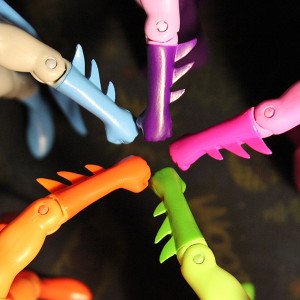 I dug these guys out of the collection after a whole lot of emotional and moral darkness surfaced in the comment sections of many comic-centric websites. When the Supreme Court legalized gay marriage, many comic publishers came out in support, displaying rainbow imagery and relating the decision to known homosexual comic characters. And then the nerds turned.
I dug these guys out of the collection after a whole lot of emotional and moral darkness surfaced in the comment sections of many comic-centric websites. When the Supreme Court legalized gay marriage, many comic publishers came out in support, displaying rainbow imagery and relating the decision to known homosexual comic characters. And then the nerds turned.
Diversity is a difficult thing in comics. The origins of most comic characters are firmly planet in a time when, well, everything was white, so they reflect that time. As comics struggle to become more current and attempt to reflect the interests of their evolving audience, publishers sometimes tweak popular characters to reflect this diversity, and each time, nerds freak out. Understandably, comics are a safe place, writers have spent decades writing their histories and personalities, and change is scary.
But change happens, and it’s not usually done by introducing a new character to comics, because it’s kind of rare that a “new” character will find much footing among comic fans invested in long-told stories. On top of that, many writers don’t really have the ability to add new characters to an existing story in a satisfying way. A young, white Ultimate Spider-Man dies, and is replaced by a black Miles Morales. A bunch of white ladies who call themselves Ms. Marvel are succeeded by a Muslim girl who takes the same name. White dude Thor is replaced by a lady Thor. And let’s not even get into switching races and genders in comic book films.
Each time one of these changes happens, many comic readers are quick to leap to the defense of comic history, but fail to acknowledge the larger picture. It feels more important that comics reflect the culture in which they now exist, as they did when comics began. It’s the only medium wherein a story is told consistently for decades, and watching that story evolve usually reflects on a changing society. And, in that way, it’s beautiful. But in too many instances, comic readers seem quick to shun acceptance and diversity, and this was never more apparent than in the hate spewed after gay marriage was legalized.
I’d repeat the comments, but I wouldn’t want to come up in searches for hateful slurs. Most anti-homosexual comments were poorly spelled references to “Adam and Steve”, Batman’s implied relationship with Robin, boycotting pages and publishers forever, and truly uninspired regurgitations of weak-ass jokes and weak ass-jokes. Many comments came with slurs, and to see slurs coming from someone with a Batman or Superman icon was a truly sobering experience. There was a time when I felt that nerds’ bullying and ostracism from society would grant them an understanding, accepting perspective. Instead, many just fixate on feeble, verbal revenge against nothing and everything.
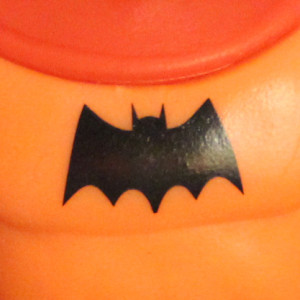 At the heart of comics is the idea that all good people are equal. It’s such a fundamental aspect of comics that it’s easy to miss, as the visual language of comics is replete with ideal bodies having ideal fights over fascinating science fiction ideas. It’s a language that evolved in order to make the message at the heart of comics accessible, but maybe the visual language has evolved at a faster rate than the average reader can understand. If comic readers can read comics books and still feel that any other human being deserves different rights than them, they probably can’t actually read in any truly functional capacity, or they just disagree with comics on a fundamental level and should put them down. Forever. Or take a basic reading comprehension course before picking them up again.
At the heart of comics is the idea that all good people are equal. It’s such a fundamental aspect of comics that it’s easy to miss, as the visual language of comics is replete with ideal bodies having ideal fights over fascinating science fiction ideas. It’s a language that evolved in order to make the message at the heart of comics accessible, but maybe the visual language has evolved at a faster rate than the average reader can understand. If comic readers can read comics books and still feel that any other human being deserves different rights than them, they probably can’t actually read in any truly functional capacity, or they just disagree with comics on a fundamental level and should put them down. Forever. Or take a basic reading comprehension course before picking them up again.
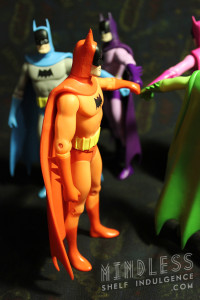 If you’re unwilling or unable to comprehend extended metaphor, or are actively opposed to the messages in your comics, burn them. We don’t need you, and you don’t need us. Every one of your heroes would hate you. You’ve ignored the values expressed by your comic idols, and you do not deserve them.
If you’re unwilling or unable to comprehend extended metaphor, or are actively opposed to the messages in your comics, burn them. We don’t need you, and you don’t need us. Every one of your heroes would hate you. You’ve ignored the values expressed by your comic idols, and you do not deserve them.
And Rainbow Batman thinks you suck.
 C. David is a writer and artist living in the Hudson Valley, NY. He loves pinball, Wazmo Nariz, Rem Lezar, MODOK, pogs, Ultra Monsters, 80s horror, and is secretly very enthusiastic about everything else not listed here.
C. David is a writer and artist living in the Hudson Valley, NY. He loves pinball, Wazmo Nariz, Rem Lezar, MODOK, pogs, Ultra Monsters, 80s horror, and is secretly very enthusiastic about everything else not listed here.